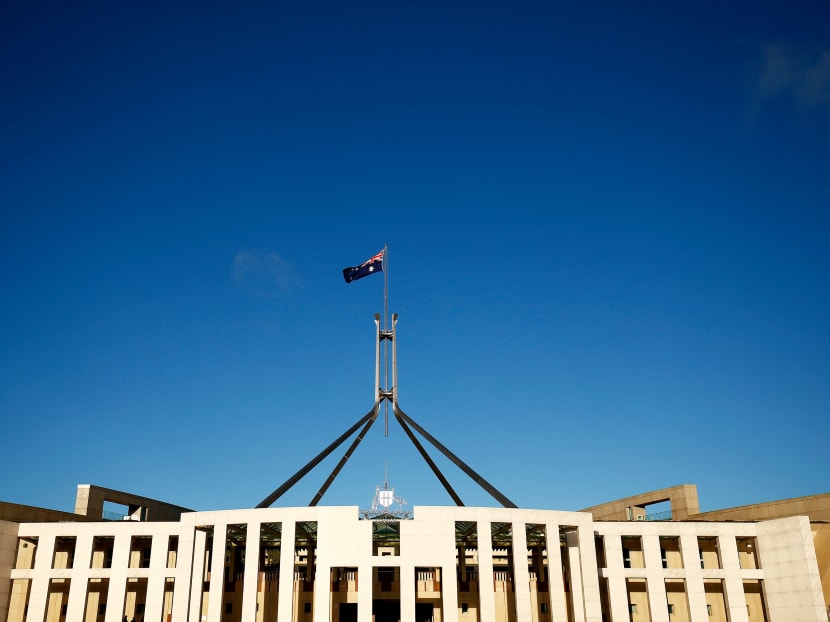In a proudly diverse Australia, white people still run almost everything
SYDNEY — Australia prides itself on its fairness and multiculturalism.

The Australian flag flies above Parliament House in Canberra. Roughly 94 per cent of Parliament is of Anglo-Celtic or European heritage, making the body more white than the United States Congress and the British Parliament.
SYDNEY — Australia prides itself on its fairness and multiculturalism.
But wander through Sydney’s corporate towers or Canberra’s halls of Parliament, and you’ll notice that Australia’s power structure is overwhelmingly white, nowhere near as diverse as the country at large.
That gap between self-image and reality is the focus of a new report released this week the Australian Human Rights Commission, which scrutinised the backgrounds of more than 2,400 senior leaders across business, government and academia.
It found, in simple terms, that white Australians with European roots still run nearly everything.
“Although those who have non-European and indigenous backgrounds make up an estimated 24 per cent of the Australian population, such backgrounds account for only 5 per cent of senior leaders,” the report states.
“Put another way, about 95 per cent of senior leaders in Australia have an Anglo-Celtic or European background.”
The report - the government’s most comprehensive study of Australia’s multicultural identity to date - reveals a country opening to the world but still resisting equality.
Even with an immigration system that prioritises the highly skilled, and even as the children of immigrants outperform, on average, the children of Australian-born parents in school, Australia’s racial and ethnic realities remain stuck in place.
The Australian government, in particular, looks much as it did in the 1960s, before the end of the White Australia policy, which restricted nonwhite immigration.
Roughly 94 per cent of Parliament is of Anglo-Celtic or European heritage, making the body more white than the United States Congress (where 19 per cent of lawmakers identify as racial or ethnic minorities) and the British Parliament (where 8 per cent of the House of Commons and around 6 per cent of the House of Lords do).
Among Australia’s federal and state government department heads, the homogeneity is even more pronounced: 99 per cent of the leadership is Anglo-Celtic or European.
“The statistics are frankly dismal,” said Tim Soutphommasane, Australia’s race discrimination commissioner and the lead author of the report.
“These are not what you’d expect from one of the world’s greatest multicultural countries.”
Dr Soutphommasane, a political philosopher with a Ph.D. from the University of Oxford who was born in France and raised in Sydney, said the new report goes beyond a 2016 study that first tried to assess multiculturalism in the country.
Researchers went beyond the chief executive level, for example, to look at those who might be on the rise in Australian corporations.
Dr Soutphommasane said he had hoped that would show greater diversity. But the second corporate tier was nearly as homogeneous as the first.
“Time alone isn’t going to lead to significant change,” he said.
Rather, the report says, Australia needs to confront the fact that its promise of egalitarianism faces barriers like prejudice.
Australia could start by collecting data more rigorously, Dr Soutphommasane and other scholars argue.
It has already mandated more reporting around gender, and race and ethnicity could follow.
Such questions could be incorporated into the census, and employers could be required to report diversity statistics, much as US companies with more than 100 employees do.
Many of those who have broken through Australia’s barriers to reach senior positions argue that more also needs to be done at human and institutional levels.
Dr Anne Aly, one of few members of Parliament from a non-European background (she was born in Egypt), said that Australia’s political leaders needed to become more comfortable with being challenged about their biases and cultural blind spots - and with the fact that Australia is more a part of Asia than Europe.
She added that political parties and the Australian news media needed to be more inclusive of non-European voices, and not just on issues like immigration or crime.
“You get pushed into these conversations about language and immigration and population levels because they’re the only conversations we’re included in - the problem conversations,” she said.
Without diversity in broader discussions, she added, “What you end up with are policies that marginalise and exclude a significant part of the population.”
Australia’s indigenous leaders have made a similar argument for years, most recently with a proposal to add an indigenous advisory body to Parliament.
The plan was rejected in October.
Some business leaders argue for a less confrontational approach.
Vivek Bhatia, the chief executive of the Australia and New Zealand operations of QBE Insurance, said he sees measuring diversity in positions of power as just the first stage of a evolution.
“Diversity is being invited to the party,” he said. “Inclusiveness is being asked to dance.”
Dr Soutphommasane said that progress could ultimately depend on deeper connections and conversations.
Part of the reason there has been so little progress in Australia, he said, is that the country - like many others - is still learning to talk about differences, biases and how to incorporate multiculturalism into its national identity.
“The default for many Australians is still colourblindness,” he said, “an insistence that we don’t see ethnic or racial difference and moreover we should not point out ethnic or racial difference - and that stifles examination and prevents Australians from taking more muscular action on multiculturalism.”
“We don’t quite have the language or sophistication to talk about this with tact and sensitivity,” he added. THE NEW YORK TIMES






